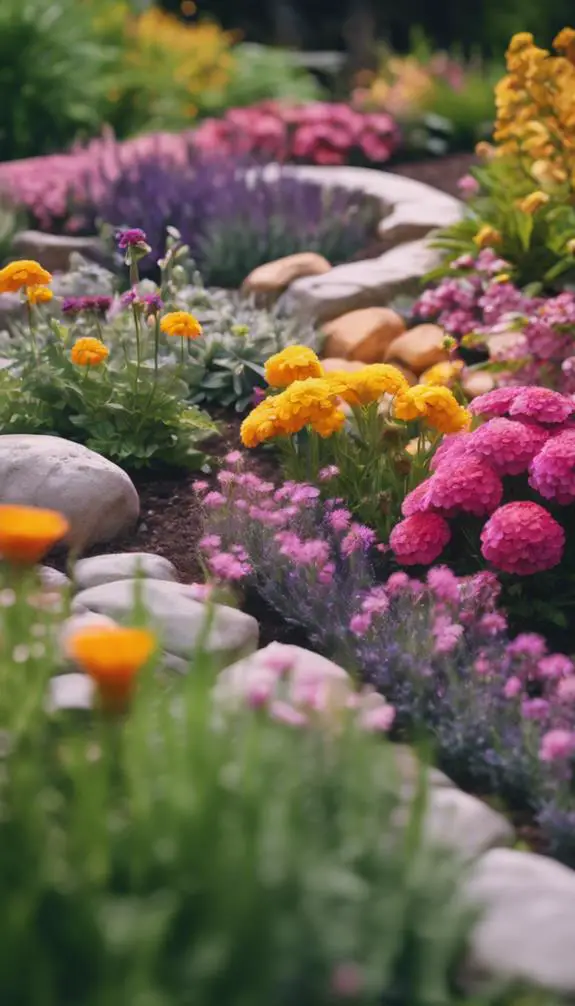As you step into your fall garden, you're likely thinking about how to make the most of the season's final stretch. You've worked hard to grow a thriving garden, and you don't want the first frost to signal the end of it all. But with a few clever hacks, you can coax more life out of your plants, prep your soil for next year, and even create a winter wonderland. By implementing a few key strategies, you'll be able to extend the growing season, protect your plants from harsh weather, and set yourself up for success come springtime. But where do you start?
Extend the Growing Season
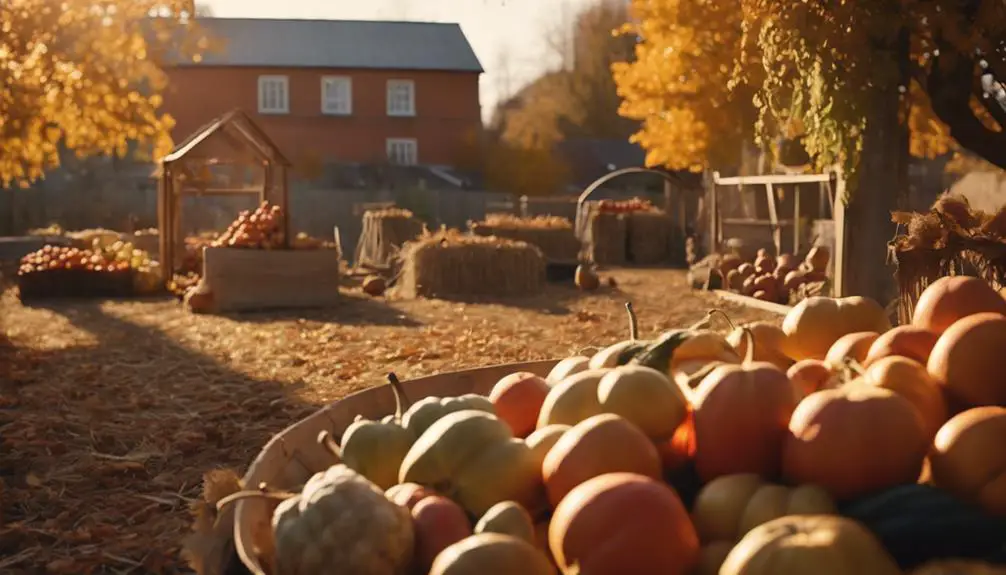
You can extend the growing season by implementing a few clever strategies to create a longer period of ideal growing conditions for your plants.
One effective way to do this is by using cold frames, which are structures that cover your plants and trap heat from the sun, protecting them from frost and cold temperatures.
By incorporating cold frames into your garden, you can start planting earlier in the spring and continue harvesting later in the fall.
Another way to extend the growing season is by utilizing season extenders, such as hoop houses or greenhouses.
These structures provide a protected environment for your plants, allowing them to thrive even in the coldest temperatures.
By incorporating these strategies into your garden, you can enjoy a longer growing season and reap the benefits of fresh, homegrown produce for months to come.
Compost Leaves and Debris
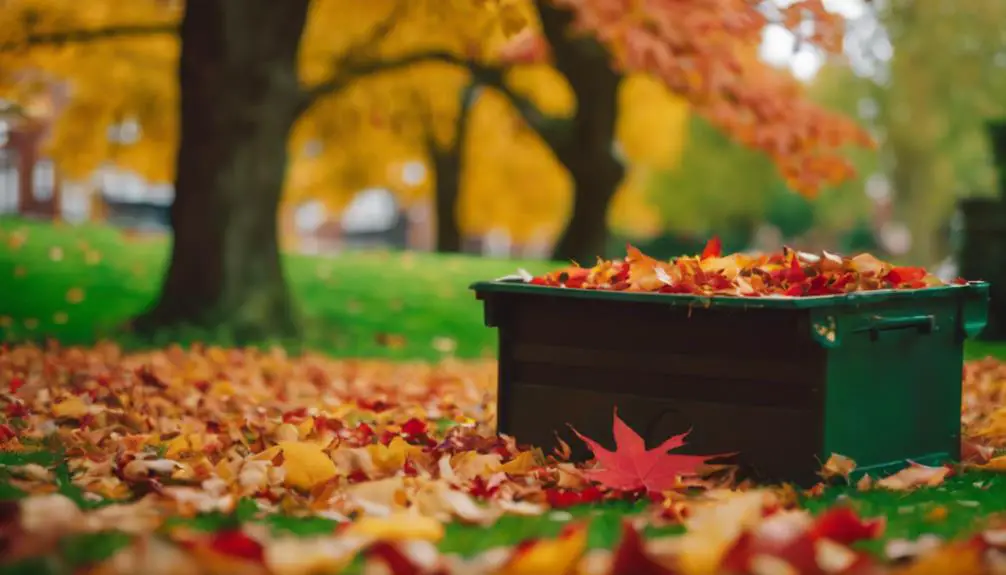
As the seasons change and leaves start to fall, it's essential to compost them along with other garden debris to create a nutrient-rich soil amendment that will fuel your garden's growth and health.
By composting leaves and debris, you'll create a natural fertilizer that's teeming with beneficial microorganisms. These microbes will break down organic matter, releasing essential nutrients that your plants will love.
One of the most valuable byproducts of debris decomposition is leaf mold, a dark, crumbly substance that's rich in nutrients and perfect for improving soil structure.
To get started, collect leaves and debris in a designated area, such as a compost bin or pile. Add some brown materials like straw or shredded newspaper to balance out the green materials like leaves and grass clippings.
Keep the pile moist and turn it regularly to speed up decomposition. With a little patience, you'll be rewarded with a nutrient-dense compost that will take your garden to the next level.
Protect Young Trees From Wind
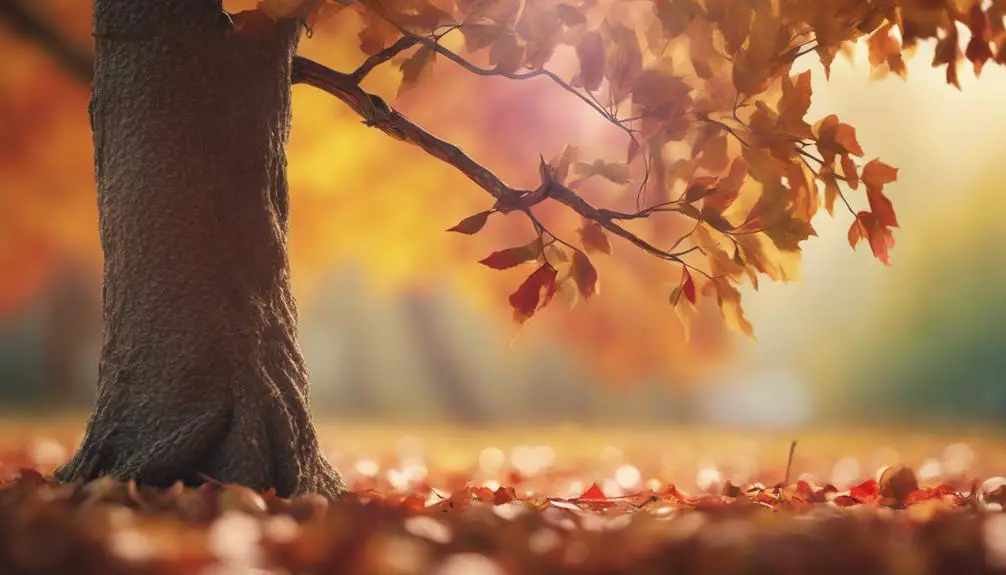
While enriching your soil with composted leaves and debris, don't forget to safeguard another valuable garden asset: young trees, which can be vulnerable to wind damage that can hinder their growth or even uproot them.
Strong gusts can cause young trees to sway excessively, leading to root disturbance and structural damage.
To prevent this, you'll need to provide support using tree stakes.
When staking a young tree, make sure to position the stake on the windward side, about 12-18 inches from the trunk.
Use a soft material like twine or rubber to tie the tree to the stake, avoiding direct contact between the tree and the stake.
This will prevent damage to the bark and allow for some flexibility.
You can also use guy wires or ropes to anchor the tree to the ground, especially if it's top-heavy or prone to wind throw.
Mulch for Winter Protection

As you prepare your garden for the cold winter months, don't forget to apply a layer of mulch for winter protection.
You'll be glad you did, as it will help prevent weeds from growing and regulate soil temperature, ensuring your plants stay healthy and strong.
Winter Weed Prevention
You can protect your fall garden from winter weeds by applying a thick layer of organic mulch, which acts as a physical barrier to prevent weeds from germinating and growing during the cold months.
This mulch layer serves as a weed barrier, blocking light and preventing weed seeds from making contact with the soil. Additionally, it can help suppress existing weeds by depriving them of oxygen and light.
For added protection, consider applying pre-emergent apps, such as corn gluten meal or Preen, to prevent weeds from germinating in the first place. These apps create a barrier on the soil surface, preventing weed seeds from sprouting.
By combining organic mulch with pre-emergent apps, you'll create a powerful weed prevention system that will give your fall garden a head start on the growing season.
Remember to apply the mulch and pre-emergent apps before the first frost to guarantee maximum effectiveness. By taking these steps, you'll be able to enjoy a weed-free garden come springtime.
Soil Temperature Regulation
By applying a thick layer of organic mulch to your fall garden, you're not only preventing winter weeds but also regulating soil temperature, which is essential for protecting your plants' roots from harsh winter conditions.
A 2-3 inch layer of mulch provides excellent soil insulation, keeping the soil cooler in the summer and warmer in the winter. This temperature regulation is pivotal for plant survival, as extreme temperature fluctuations can cause root damage.
To take it a step further, consider using temperature probes to monitor the soil temperature. This will give you a precise reading of the soil temperature, allowing you to adjust your mulching strategy accordingly.
Divide and Transplant Perennials
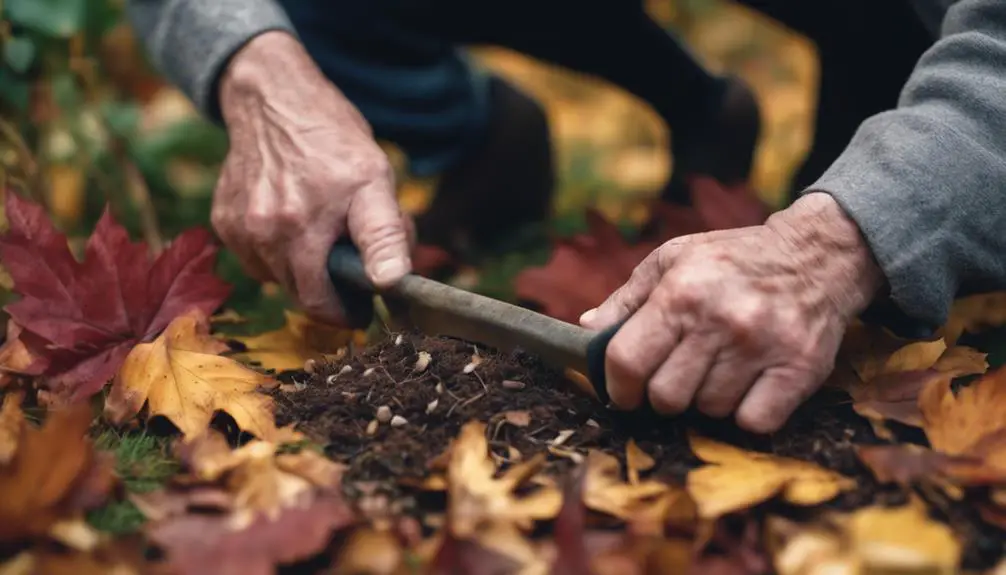
Fall is the ideal time to divide and transplant perennials, when the plants are dormant and less prone to stress from relocation.
You'll be glad you did, as it's an opportunity to revitalize your garden and give your perennials a fresh start.
Check your plants for signs of being root bound or overcrowded, as these are prime candidates for division.
Dig up the entire clump, gently separating the roots and replanting the healthiest sections in well-draining soil. Make clean cuts with a sharp tool, and water thoroughly after transplanting.
Consider dividing perennials that have outgrown their containers or are showing signs of decline. By doing so, you'll encourage new growth and prevent overcrowding, which can lead to disease and pests.
Remember to handle the roots with care, as they're more fragile than you think.
With a little TLC, your transplanted perennials will thrive come springtime.
Plant Fall Vegetables and Fruits
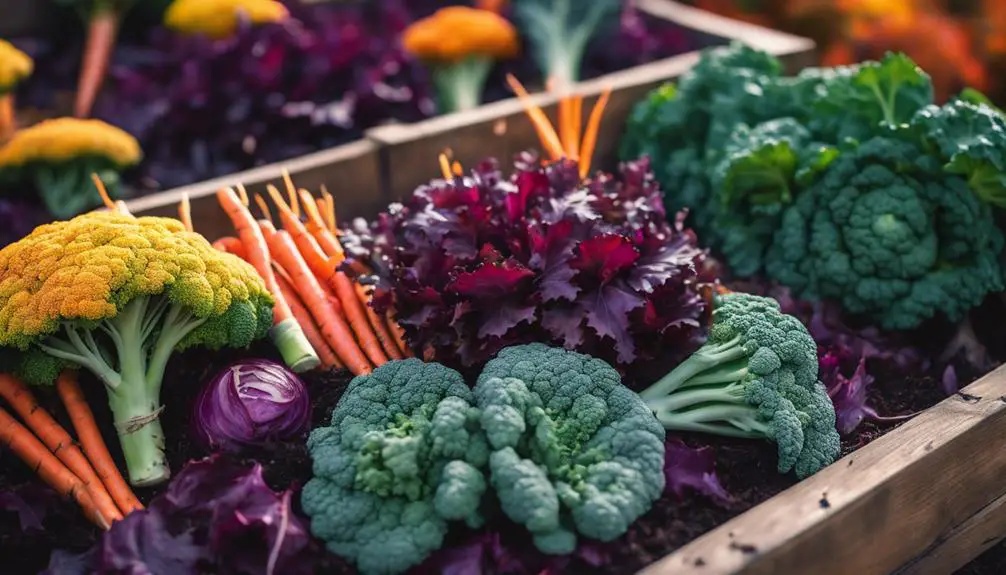
Three cool-season crops that thrive in the cooler temperatures of autumn are broccoli, kale, and carrots, making them ideal for planting in your fall garden.
When selecting varieties, look for ones specifically bred for fall production, such as 'Deep Purple' broccoli or 'Lacinato' kale. These seasonal varieties are designed to mature quickly, often in as little as 50 days, and can tolerate light frosts.
For a successful fall harvest, make sure to plant at the right time. In most regions, this is about 8 to 10 weeks before the first frost date.
Plant your fall vegetables and fruits in well-draining soil with full sun, and keep the soil consistently moist. Consider using row covers to retain warmth and protect your crops from pests.
Create a Winter Interest Garden
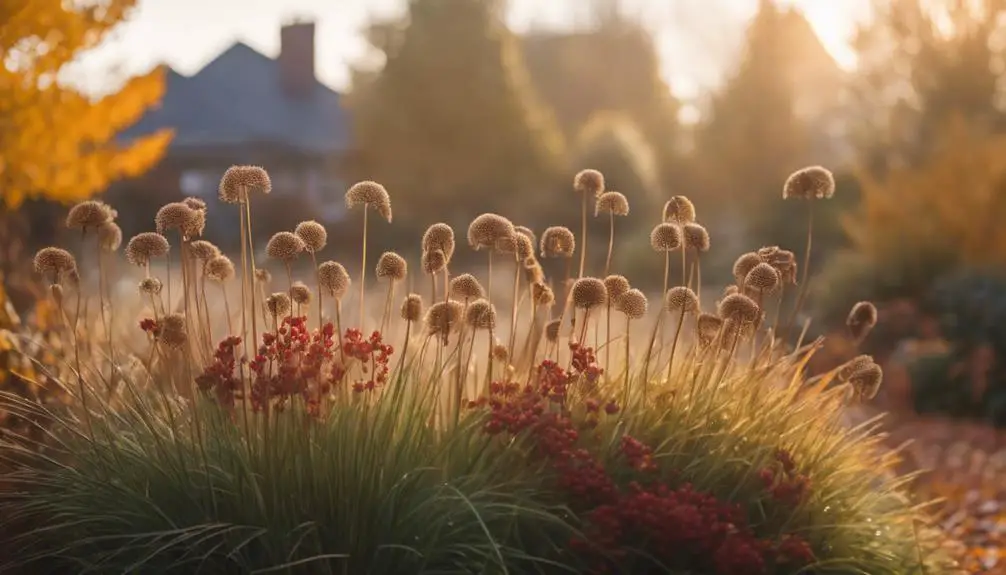
As you plan your winter interest garden, you'll want to focus on creating a structure that provides visual appeal even in the coldest months.
You can achieve this by incorporating elements like evergreen trees, shrubs, and ornamental grasses that will add texture and color to your landscape.
Winter Garden Structure
You can create a stunning winter interest garden by incorporating structural elements that provide visual appeal even when plants are dormant.
One way to do this is by using garden frames, which can add a touch of elegance to your winter garden. These frames can be used to support climbing plants, create a sense of depth, or simply provide a beautiful backdrop for your winter landscape.
Another innovative approach is to incorporate cold tunnels into your garden design. These tunnels are basically mini-greenhouses that extend the growing season and protect plants from harsh winter conditions.
By using cold tunnels, you can grow winter crops, such as kale and spinach, and extend the harvest season. Additionally, cold tunnels can add an interesting architectural element to your winter garden, creating a sense of mystery and intrigue.
Year-Round Visual Appeal
By incorporating a mix of evergreen trees, shrubs, and perennials, you can create a winter interest garden that boasts year-round visual appeal.
This thoughtful combination will guarantee your outdoor space remains enthralling even in the dead of winter.
Consider incorporating plants with interesting bark, like birch or river birch, to add texture and visual interest.
Ornamental grasses, like pampas grass or fountain grass, also provide movement and drama during the winter months.
To add a pop of color, incorporate plants with berries, like holly or winterberry, which will maintain their vibrant hue even in the cold weather.
You can also use fall colors to create a beautiful winter landscape by planting trees and shrubs with brilliant autumn foliage, like oak or maple.
Don't forget to add some garden ornaments, like a statement sculpture or a decorative bench, to create visual interest and depth.
By incorporating these elements, you'll create a winter interest garden that's just as stunning as your summer oasis.
With a little planning, you can enjoy your outdoor space 365 days a year.
Harvest and Store Seeds

Gather mature seeds from your fall garden, checking for dryness and color changes that indicate ripeness.
You'll want to harvest seeds when they're fully dry and brittle, as this guarantees maximum seed viability.
Remove the seeds from their pods or flowers, and gently clean them with a soft brush to remove any debris.
Store the seeds in a cool, dry place, like a paper envelope or an airtight container, to maintain their viability.
Consider joining a seed exchange with fellow gardeners or online communities to swap seeds and expand your collection.
This is a great way to discover new varieties and diversify your garden.
When storing seeds, be sure to label them with the plant name, date, and any specific growing instructions.
This will help you keep track of your collection and confirm you're planting the right seeds come springtime.
Clean and Store Garden Tools
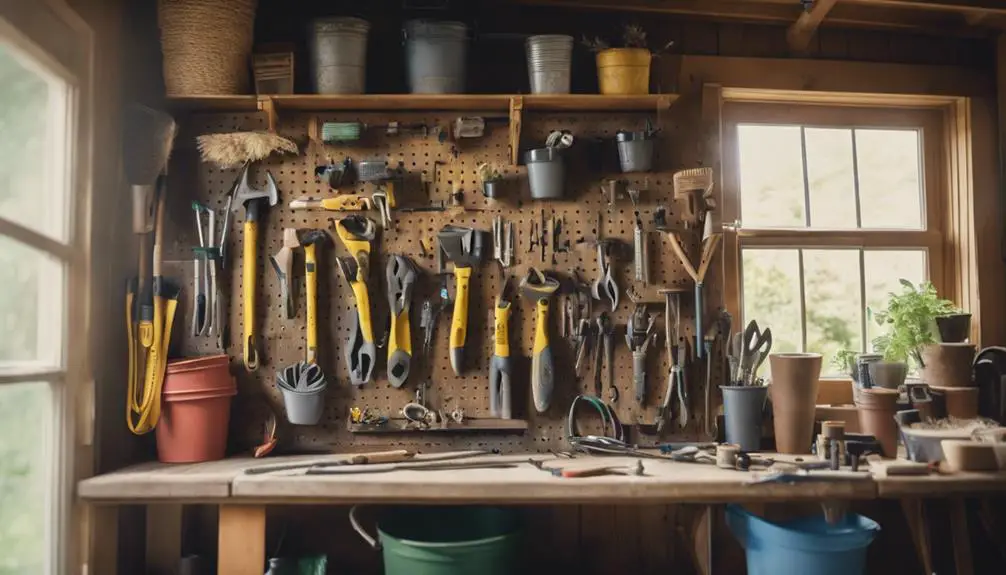
As you wrap up your fall gardening tasks, don't forget to give your tools some TLC.
You'll want to clean and store them properly to keep them in good condition and prevent the spread of diseases.
Tool Organization Tips
Your garden shed or storage area is likely cluttered with dirty, rusty tools, making it difficult to find what you need when you need it, so take the time to clean and store your garden tools properly to guarantee they remain in good condition and are easily accessible next season.
Start by assigning a designated spot for each tool, making it easy to grab what you need on the go. Consider investing in tool belts with multiple pockets to keep frequently used items, like pruners and gloves, within reach. For larger tools, install hanging pegboards on the wall or back of a door to maximize storage space. Label each hook or pocket so you can quickly identify where each tool belongs.
To keep your tools organized and protected, store them in a dry, clean environment. Use a rust-inhibiting spray or oil to prevent corrosion and extend the life of your tools. By implementing these tool organization tips, you'll save time and frustration next season, and certify your garden tools remain in top condition.
Clean and Disinfect
Now that your tools are organized and assigned a designated spot, it's time to give them a thorough cleaning and disinfecting to prevent the spread of diseases and pests that can harm your plants.
You'll want to remove any dirt, debris, or residue that may be harboring bacteria or fungi. Start by wiping down each tool with a soft cloth or brush to remove loose dirt.
Then, mix a solution of one part bleach to nine parts water and soak your tools for 10-15 minutes. This will help kill any bacteria or fungi that may be present.
After soaking, rinse your tools thoroughly with clean water and dry them with a clean towel to prevent rust.
When it comes to garden sanitizing, crucially, you must sterilize your equipment regularly.
You can do this by dipping your tools in a solution of 70% isopropyl alcohol or by running them through a dishwasher.
Regular equipment sterilization will help prevent the spread of diseases and pests, ensuring a healthy and thriving garden.
Prevent Soil Erosion
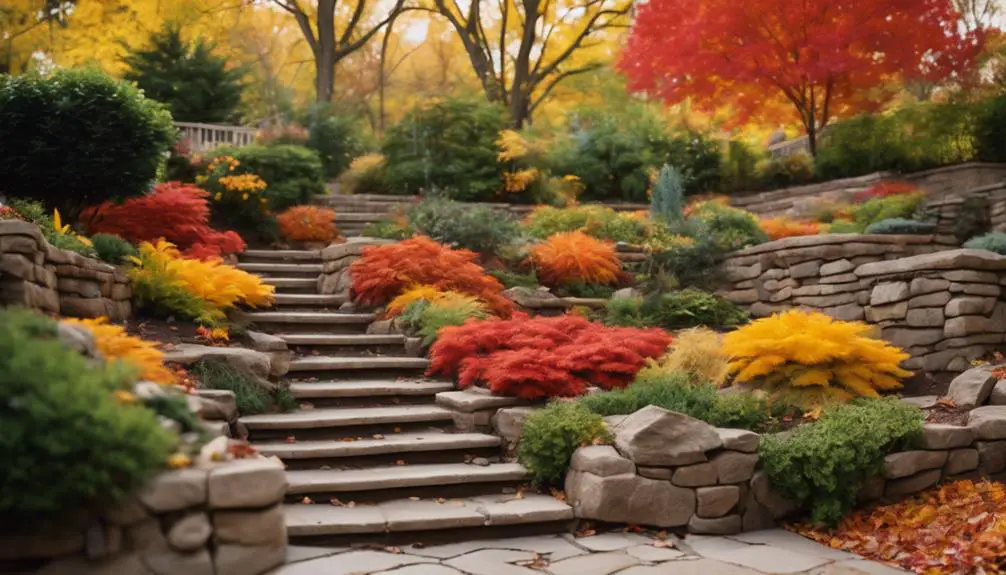
One essential step in maintaining a healthy fall garden is to prevent soil erosion, which can occur when heavy rainfall or irrigation causes soil particles to wash or blow away.
You can't afford to let your hard work go down the drain – literally! To prevent soil erosion, you'll need to create soil barriers that'll hold the soil in place. Mulch, straw, or wood chips can serve as effective barriers, but for more severe erosion issues, consider using geotextiles or erosion control mats.
These innovative solutions will stabilize the soil and prevent it from shifting or washing away.
When installing soil barriers, make sure to secure them firmly in place, especially on slopes or in areas with heavy rainfall. You can use stakes, pins, or even rocks to keep the barriers in position.
Additionally, consider planting groundcover or deep-rooted plants that'll help hold the soil in place. By taking these proactive measures, you'll be able to maintain a healthy and thriving fall garden, even in the face of heavy rainfall or irrigation.
Provide Fall Support for Plants
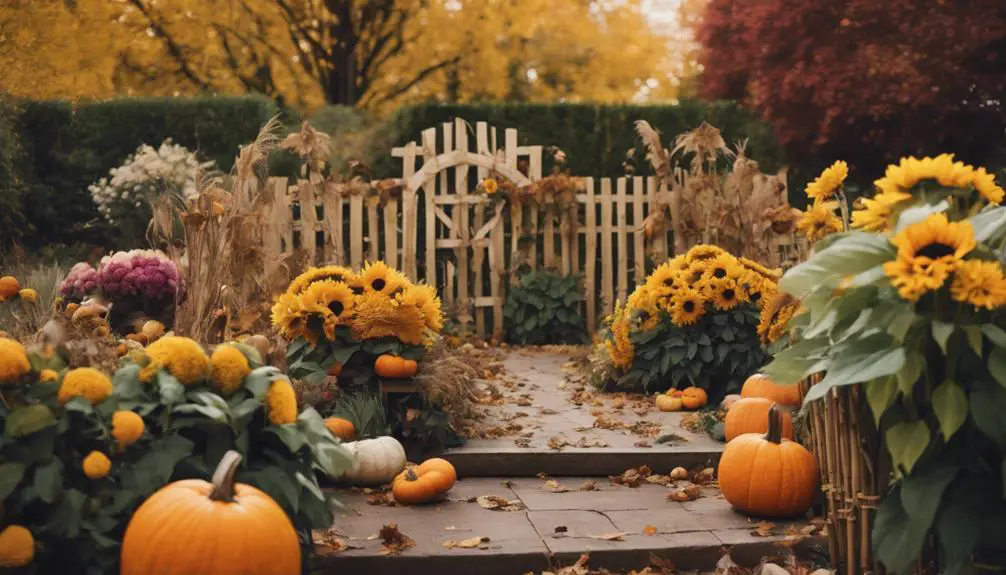
As the growing season winds down, many plants, especially those with heavy fruit or dense foliage, may need additional support to prevent damage from wind, rain, or snow, and to keep them upright and thriving throughout the fall.
You'll want to identify plants that need a little extra help, such as top-heavy sunflowers, fruit-laden tomato plants, or shrubs with dense foliage.
When it comes to stake placement, make sure to position them carefully to avoid damaging the plant's roots or stems. Drive stakes into the ground at an angle, and gently tie the plant to the stake using a soft material like twine or cloth. Be careful not to constrict the plant's growth.
Plant pruning is also essential to provide fall support. By trimming back dense foliage, you'll reduce the weight on the plant's stems and prevent breakage. Prune any weak or dead branches, and consider cutting back perennials to about 3-4 inches from the ground to protect them from winter damage.
Attract Birds to Your Garden
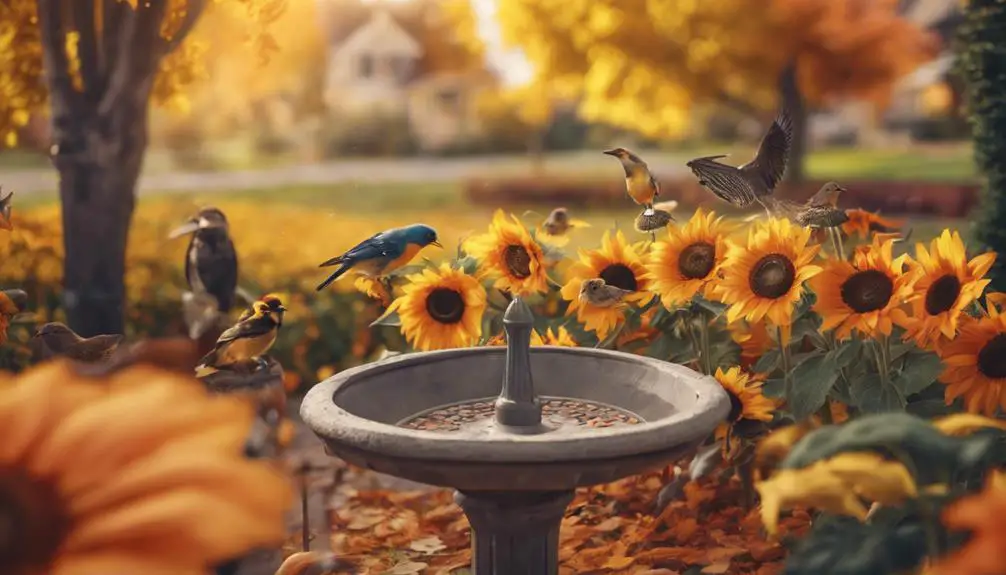
You can entice birds to visit your garden by incorporating plants that provide berries, seeds, or nectar, which won't only attract these feathered friends but also add a splash of color and vibrancy to your fall landscape.
Plants like coneflowers, black-eyed Susans, and shrubs like dogwood and hawthorn are perfect for this purpose. By incorporating these plants, you'll create a bird-friendly habitat that'll attract a variety of bird species.
To take it a step further, consider adding bird baths and bird feeders to your garden. Bird baths provide a source of water for birds to drink and bathe in, while bird feeders offer a supplemental food source.
When choosing a bird feeder, opt for one that's designed for fall, as it'll be filled with seeds and nuts that are specifically formulated for the season. By incorporating these elements, you'll create a haven for birds that'll keep them coming back to your garden all season long.
Plan for Next Year's Garden
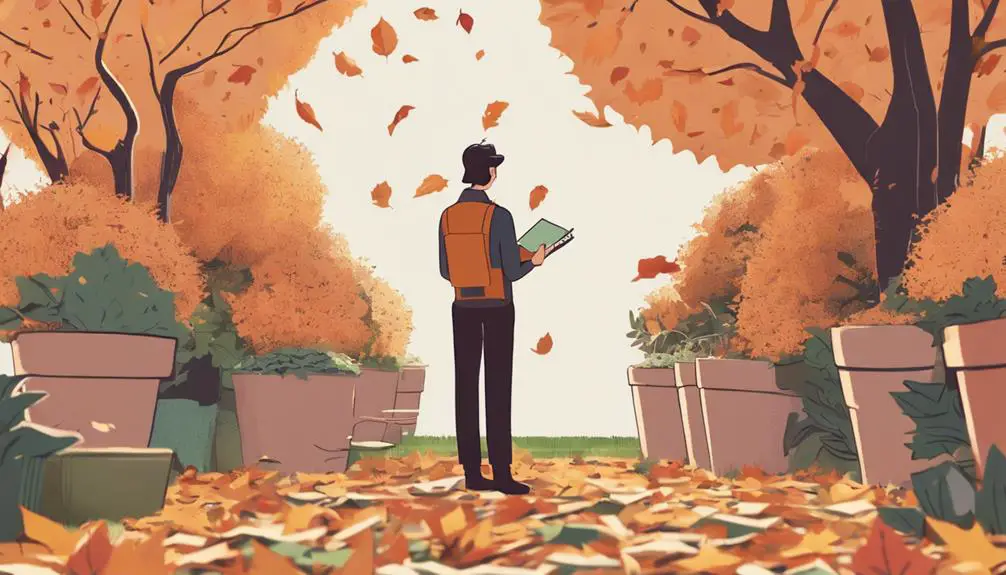
By reviewing your garden's performance this fall, you can identify areas for improvement and make informed decisions about what to plant, prune, or change for next year's garden.
Take notes on what worked and what didn't, and use this information to create a garden calendar that outlines specific tasks and deadlines for the upcoming growing season.
Keep a garden diary to track your progress, note weather patterns, and record the performance of different plant varieties.
This will help you refine your gardening strategy and make adjustments as needed.
Review your diary regularly to identify trends and areas for improvement, and use this information to inform your planting decisions.
Frequently Asked Questions
How Often Should I Water My Fall Garden During Dry Spells?
During dry spells, you should water your garden when the top 2-3 inches of soil feel dry to the touch, and consider rainwater harvesting to supplement your supply, ensuring ideal soil moisture levels.
Can I Reuse Last Year's Garden Gloves or Should I Buy New Ones?
Before diving into fall gardening, consider your gloves: can you reuse last year's or do you need new ones? Proper glove maintenance, including cleaning and drying, is key, but if they're worn or compromised, prioritize hand hygiene and invest in a fresh pair.
What Is the Best Way to Deal With Garden Pests in the Fall?
You'll want to implement effective pest monitoring strategies, like regularly inspecting plants and setting traps, to identify and manage fall pests. Introduce beneficial insects, such as ladybugs and lacewings, to naturally control pest populations.
How Do I Know When It's Time to Stop Fertilizing My Plants?
You'll know it's time to stop fertilizing when your plants show no response to applications or soil testing reveals ideal nutrient levels. Adjust fertilizer timing based on soil test results to avoid over-fertilizing and wasting resources.
Should I Remove Dead Plants or Leave Them for Winter Interest?
You're wondering whether to remove dead plants or leave them for winter interest. Leaving them can add Winter aesthetics, but consider the seasonal decay and potential disease spread; weigh the benefits against potential drawbacks before making a decision.
Conclusion
You've optimized your fall garden for maximum potential.
By extending the growing season, composting leaves, and protecting young trees, you've set yourself up for success.
Mulching, dividing perennials, and providing support have further guaranteed a thriving garden.
Now, take it to the next level by attracting birds and planning for next year's garden.
With these hacks, you'll be enjoying a vibrant winter interest garden and looking forward to a bountiful harvest in the seasons to come.


